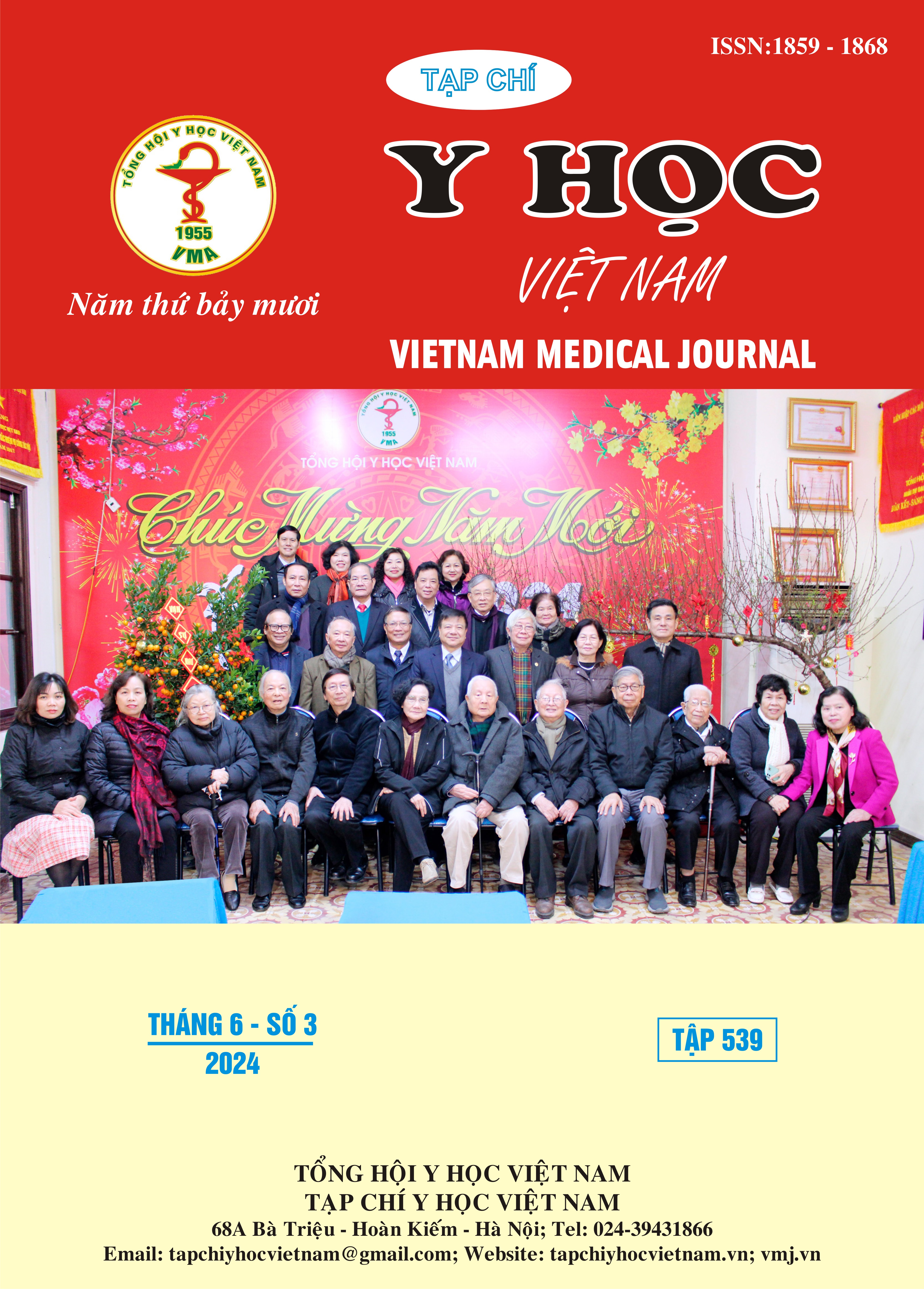INDICATIONS AND RESULTS OF TRACHEOSTOMY IN CHILDREN IN THE INTIMATIVE RECOVERY DEPARTMENT OF THE NATIONAL CHILDREN'S HOSPITAL
Main Article Content
Abstract
Background: Tracheostomy is a procedure to open a hole in the trachea (at the neck) and place a catheter (Canuyn) to allow air to flow directly from the outside into the trachea and accessory that does not pass through the airway above the tracheostomy opening hole [1]. This is a common emergency technique in the Ear, Nose and Throat specialty. Tracheostomy creates a safe airway in cases of closed airway obstruction at the pharynx, larynx, and trachea due to many different causes. In the specialty of Pediatrics, the popularity of intubation management and the increase in the number of patients treated in intensive care units, long-term mechanical ventilation is the most common indication. Meaning of tracheostomy in children [2]. In Vietnam, there have been a number of studies on the indications, effectiveness and complications of tracheostomy in adults, however, very few studies on this issue have been conducted on children. Objectives: To describe indications and results of tracheostomy in children from 0 to 15 years old, treated at the intensive care unit of the National Children's Hospital, with indications and receiving tracheostomy from January 1, 2020. January 2020 to June 30, 2023. Descriptive, retrospective, convenience sampling study. Results: Median age of subjects is 4.9 years old, the most common age group is > 28 days old - 2 years old; the majority of patients have neurological diseases (50%); The main indication for tracheostomy is prolonged mechanical ventilation (88.5%), the average duration of mechanical ventilation until tracheostomy is 27.6 days; At the time of discharge, 44% of patients were weaned off the ventilator, 44.5% of patients could not be weaned off the ventilator, 11.5% of patients died, and the duration of mechanical ventilation before tracheostomy was prolonged, increasing the duration of ventilation. treatment in intensive care units.
Article Details
Keywords
Tracheostomy, children, pediatric intensive care
References
2. Ertugrul I, Kesici S, Bayrakci B, et al. (2016). Tracheostomy in Pediatric Intensive Care Unit: When and Where?. Iran J Pediatr, 26(1), 22–83.
3. Lee W, Koltai P, Harrison A.M, et al. (2002). Indications for tracheotomy in the pediatric intensive care unit population: a pilot study. Arch. Otolaryngol. Head Neck Surg., 128(11), 1249–1252.
4. Wood D, McShane P, and Davis P. (2012). Tracheostomy in children admitted to paediatric intensive care. Arch. Dis. Child., 97(10), 866–869.
5. Edwards J.D, Houtrow A.J, Lucas A.R, et al. (2016). Children and Young Adults Who Received Tracheostomies or Were Initiated on Long- Term Ventilation in PICUs. Pediatr Crit Care Med, 17(8), 324-334.
6. Carron J.D, Derkay C.S, Strope G.L, et al. (2000). Pediatric tracheotomies: changing indications and outcomes. Laryngoscope, 110(7), 1099–1104.
7. Gill J, Bhardwaj B, and Singla S. (2017). Changing trends in indications of pediatric tracheotomy: A tertiary care center experience. Journal of Laryngology and Voice, 7(1), 7.
8. Shinkwin C.A. and Gibbin K.P. (1996). Tracheostomy in children. J R Soc Med, 89(4), 188–192.


